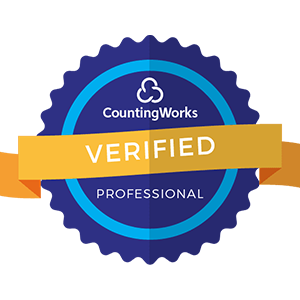
In today's rapidly evolving business landscape, organizations face the critical challenge of ensuring a steady pipeline of capable leaders ready to take the helm. Succession planning, once considered a mere formality, has now become a strategic imperative for companies looking to future-proof their leadership and maintain a competitive edge. Gone are the days of simply anointing the next in line; instead, forward-thinking organizations are embracing innovative approaches to succession planning that prioritize adaptability, diversity, and continuous development.

Succession planning is not just about filling vacant positions; it's about building a sustainable leadership pipeline that can weather the storms of change. A well-executed succession plan ensures that an organization has the right people with the right skills in the right roles at the right time. It provides a roadmap for identifying, developing, and retaining high-potential talent, while also mitigating the risks associated with unexpected departures or leadership vacuums.
These numbers underscore the urgent need for organizations to prioritize succession planning as a strategic imperative. But what does effective succession planning look like in the 21st century? Let's explore some innovative approaches that are redefining the field.
In an era of constant disruption, linear succession plans are no longer sufficient. Organizations must embrace agility and adaptability in their approach to succession planning, recognizing that the skills and competencies required of future leaders may look very different from those of today.
One way to build adaptability into succession planning is through scenario planning. By envisioning multiple possible futures and the leadership capabilities needed to navigate them, organizations can create more resilient succession plans that can flex and evolve as circumstances change. This approach also encourages a more proactive stance, as organizations actively shape their future rather than simply reacting to external forces.
Another key aspect of agile succession planning is the ability to identify and develop "hidden gems" within the organization. These are high-potential individuals who may not fit the traditional mold of a leader but possess unique skills, perspectives, and experiences that could prove invaluable in navigating future challenges. By casting a wider net and looking beyond the usual suspects, organizations can uncover untapped talent and build a more diverse and resilient leadership pipeline.

Diversity and inclusion are no longer just buzzwords; they are essential components of effective succession planning. Research has consistently shown that diverse teams outperform homogeneous ones, bringing a wider range of perspectives, experiences, and problem-solving approaches to the table. Moreover, as the workforce becomes increasingly diverse, organizations that fail to reflect that diversity in their leadership ranks risk losing relevance and credibility.
To prioritize diversity and inclusion in succession planning, organizations must take a proactive and intentional approach. This means setting clear diversity goals, implementing bias-mitigating practices in talent identification and development, and creating inclusive cultures that allow diverse talent to thrive. It also means looking beyond traditional metrics of success and considering a wider range of leadership qualities, such as empathy, adaptability, and cultural competence.
One innovative approach to building diverse leadership pipelines is through sponsorship programs. Unlike mentorship, which focuses on providing guidance and support, sponsorship involves actively advocating for and creating opportunities for high-potential diverse talent. By pairing senior leaders with diverse protégés and holding them accountable for their advancement, organizations can accelerate the development of underrepresented talent and ensure a more equitable distribution of leadership opportunities.
In a world of constant change, the notion of a "finished" leader is a dangerous illusion. Effective succession planning recognizes that leadership development is a continuous process, not a one-time event. Organizations must create a culture of continuous learning and development, providing ongoing opportunities for leaders to grow, adapt, and acquire new skills.
One innovative approach to continuous development is the use of stretch assignments. These are challenging projects or roles that push leaders outside their comfort zones and force them to develop new capabilities. By intentionally placing high-potential talent in stretch assignments and providing them with the necessary support and resources, organizations can accelerate their development and prepare them for future leadership roles.
Another key aspect of continuous development is the use of real-time feedback and coaching. Traditional performance reviews, conducted on an annual or semi-annual basis, are often too infrequent and backward-looking to drive meaningful growth. Instead, organizations should embrace a culture of ongoing feedback, using tools like 360-degree assessments, peer feedback, and real-time coaching to help leaders identify strengths, weaknesses, and areas for improvement. By creating a feedback-rich environment, organizations can foster a growth mindset and ensure that leaders are continuously learning and adapting.

In today's data-driven world, technology and analytics play an increasingly important role in succession planning. By leveraging data and advanced analytics, organizations can gain deeper insights into their talent pools, identify high-potential individuals, and make more informed decisions about leadership development and succession.
One innovative approach is the use of predictive analytics to identify future leadership potential. By analyzing a wide range of data points, such as performance metrics, behavioral assessments, and social network analysis, organizations can create predictive models that identify individuals with the highest likelihood of success in future leadership roles. This approach allows organizations to make more data-driven decisions about talent identification and development, reducing bias and increasing objectivity.
Another key area where technology can support succession planning is through the use of virtual reality (VR) and augmented reality (AR) for leadership development. By immersing leaders in realistic simulations of challenging situations, such as navigating a crisis or managing a diverse team, VR and AR can provide a safe space for leaders to practice and develop new skills. This approach allows organizations to accelerate leadership development and better prepare leaders for the challenges they will face in real-world situations.
Effective succession planning requires ongoing measurement and evaluation to ensure that the program is delivering the desired results. Organizations must establish clear metrics and key performance indicators (KPIs) to track the effectiveness of their succession planning efforts and make data-driven decisions about program improvements.
By regularly measuring and evaluating these metrics, organizations can identify areas for improvement and make data-driven decisions about program enhancements. This approach ensures that succession planning remains a dynamic and evolving process, continuously adapting to the changing needs of the organization and the business environment.
In today's rapidly changing business landscape, succession planning is no longer a luxury but a necessity. Organizations that fail to prioritize succession planning risk losing their competitive edge, while those that embrace innovative approaches can build a sustainable pipeline of capable leaders ready to navigate the challenges of the future.
By embracing agility and adaptability, prioritizing diversity and inclusion, fostering continuous development and learning, leveraging technology and data, and measuring and evaluating success, organizations can future-proof their leadership and ensure long-term success. The path to effective succession planning is not always easy, but the rewards - a strong, diverse, and resilient leadership pipeline - are well worth the effort.
As you embark on your own succession planning journey, remember that the most effective plans are those that are tailored to the unique needs and culture of your organization. By staying attuned to the changing business environment, continuously learning and adapting, and always putting your people first, you can build a succession planning program that not only secures your organization's future but also unleashes the full potential of your greatest asset: your people.


